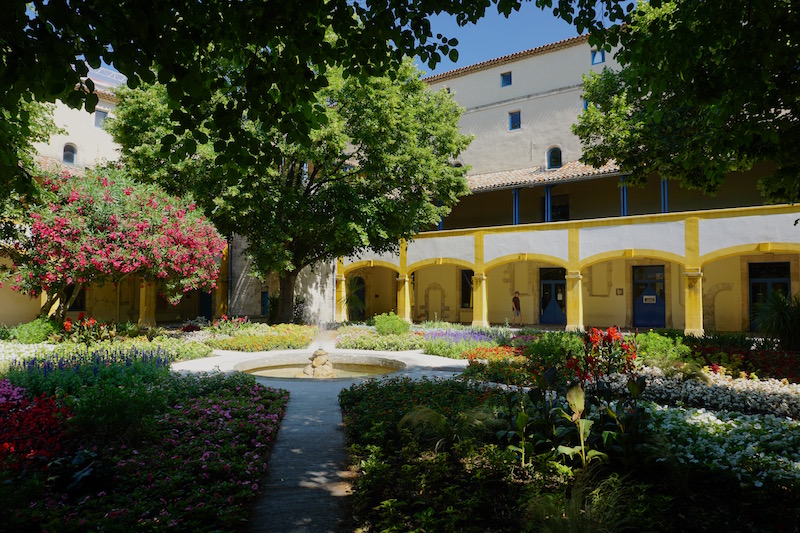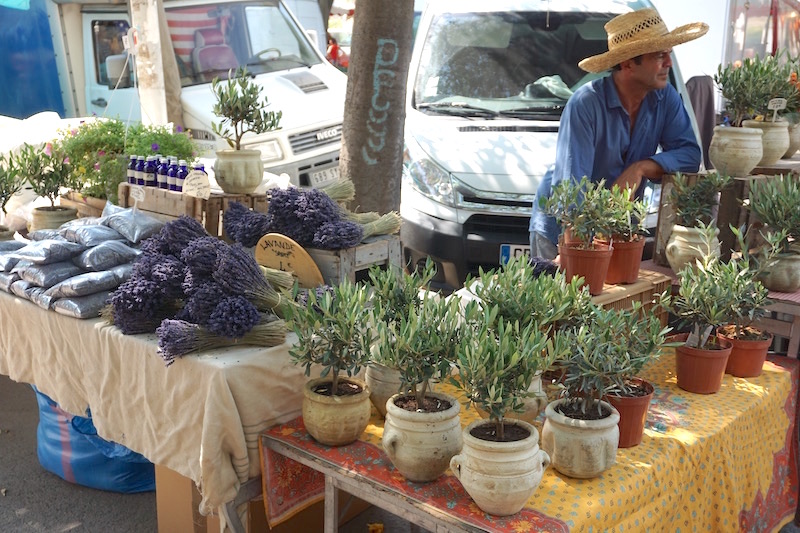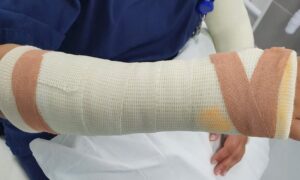Provence was never really on my “must go” list.
As far as I was concerned it was full of relocated Brits, tanned wealthy Parisiennes in Cannes, Nice, Marseille and artists and novelists waxing lyrical about lavender.
And yes, that is still true. But having been there for a week’s vacation, I can assure you that it is oh, so much more!
Our base was Arles, an hour west of Marseilles by car or train. The ancient city of Arelate, once a considerably important city in Roman Gaul, Arles was put on the map in the 19th century by Dutch artist Vincent van Gogh. Van Gogh lived here for 18 months during which time he created some of his most colourful work … and mutilated himself in the now-famous “ear” incident.
The town, with 54,000 inhabitants, lost its major employer in 1984 when the national railway shut down its huge repair depot there. Today, massive construction is happening on the site as it becomes Luma Arles, an experimental cultural centre.
The old industrial buildings are becoming exhibition and presentation space and the surrounding area a park. The crowning glory, an intricate Frank Gehry creation, will be a research and reference facility.
So, the town’s link with artists continues.
The present city of Arles wraps itself around the Roman city like a tenderly tied ribbon and you don’t have to walk far before you come across an ancient remnant from those ancient days.
The stunning UNESCO Roman Arena or amphitheatre (below) was built in 90CE. Able to hold 20,000 spectators who once flocked there to watch chariot races and gladiator battles, the arena remains impressive 21 centuries later.
It’s used now for Spanish bullfighting and the local bull-friendly, Course Camarguaise, the bulls being chased for the rosette or tassel they are wearing, the animals much revered.
As you walk around the white-hot walls, you swear you can hear the roar of the crowd as the gladiators battle to their deaths.
Other Roman UNESCO World Heritage sites in Arles are:
- Alyscamps, the necropolis or cemetery
- the theatre, still used for events
- the Cryptoporticus, or tunnels built, in this case, beneath the Forum
- the obelisk in Place de la Republique
- the Thermae Constantin, ruins of the popular public baths
Each of these 1st-century buildings is part of the living, breathing modern city. If you are interested in the ancient Romans, the city has a stunning archeological museum, the Musée de l’Arles antique, which houses the hundreds of artifacts found in the city.
Its surroundings, including the Arles Rhône 3 – a 31 metre long 1st-century Roman vessel found in the river Rhône in 2004, definitely fulfilled my husband’s demand for some history on vacation!
The CITY AND THE ARTIST
The town of Arles also is resplendent with medieval architecture, such as St. Trophime church, another UNESCO treasure, with incredible carvings on its portico. The winding shaded streets, with beautiful white limestone buildings that glow in the afternoon sun and squares that offer pleasant dappled shadow, provide welcome relief from the heat and offer enticing cafés with cooling drinks.
The town has many interesting small stores selling everything from lavender, clothing, local wines, and cheeses to Christian Lacroix (a home grown designer). The market on Wednesday and Saturday cannot fail to delight you with its goods, and I challenge anyone to not be tempted by the wonderful array of local produce.
My constant refrain was “I wish I could get this in my carry-on!” The restaurants were plentiful and we had some perfect meals sat in the lively squares, watching the world pass by. Many of the restaurants even provided mosquito repellent spray, a “must have,” that we were unaware of until our first evening.
For me, Arles not only provided a tranquil base for our Provence explorations but also a happy coincidental connection with the Netherlands where I now live.
Vincent van Gogh and I had something in common; we both fell in love with Provence during our visits from the Netherlands. Van Gogh arrived in the provincial town in early 1888 and his time here became one of his most prolific periods with over 200 paintings completed and many drawings.
Everyone knows at least one of his Arles inspired paintings, from the “Bedroom in Arles,” the “Café Terrace at Night,” to the most famous “Sunflowers.” It is remarkable to be standing outside a café on a warm evening, knowing that a troubled Dutchman once sat there recreating the same view on canvas. It is even more heart warming to know that some of these masterpieces were created to decorate Van Gogh’s simple apartment prior to his friend’s, Paul Gaugin, visit.
Sadly the friendship with Gaugin and Van Gogh’s time in Arles was to end in tears. Gaugin and Van Gogh argued, followed by the mental breakdown of Van Gogh and the severing of his ear.
Vincent spent time recovering in Arles hospital, which provided him with some inspiration for three paintings. The hospital, now known as Espace Van Gogh, has recreated the courtyard according to one of those paintings and is a popular place to visit. The Foundation Vincent Van Gogh keeps the link with the artist by featuring eight of his paintings each year, on loan from museums around the world.
Eventually, Van Gogh left Arles for an asylum in a town close by, St-Remy-de-Provence, after he continued to struggle with his mental health. St Remy is a little over 30 minutes by car from Arles and worth a visit to wander the small town and visit the asylum, St Paul de Mausole, where Van Gogh painted over 150 canvases.
Both St-Remy-de-Provence and Arles have guided walks showing the locations of some of Van Gogh’s paintings and we took a guided walking tour through Arles one evening with a very well informed tour guide.
So Arles has become to me, along with the irrational but artistic Dutchman, somewhere that inspires!
The golden limestone walls and the screaming swifts providing aerobatic displays each evening, the meandering narrow streets, cool in the heat of the sun and the friendliness of the locals, combined with the delicious local wine and food have all managed to place Provence and Arles on to my “Must Return” list.
You can see Jackie Harding’s complete Dispatches portfolio here.
Photographer/writer Jackie Harding was born in the United Kingdom. As a long-time expat, she lived in Boston for 12 years and in the Netherlands for the past 10 years.
Trained as a nurse in the U.K., she worked for nine years in the United States as a special education teacher’s assistant. Since moving to the Netherlands, she has discovered writing and photography.
Contributing to Dispatches since 2016, Jackie has written about her travels around Europe as well as about expat life and issues.
She also covered the Women’s March Amsterdam.
She’s married to British businessman Martin Harding and is the mother of two international adult children.





















